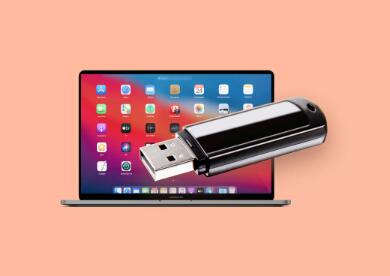Losing files from a USB drive can be frustrating, especially when the data is important. Fortunately, there are various methods to recover deleted files, ranging from built-in operating system features to specialized data recovery software.
1. USB File Deletion
When files are deleted from a USB drive, they aren’t immediately removed from the storage media. Instead, the space they occupied is marked as available for new data. This means that unless new data overwrites that space, the deleted files can often be recovered.
1.1 Types of Deletion
Soft Delete: Files moved to the Recycle Bin (Windows) or Trash (Mac) can be easily restored.
Hard Delete: Files permanently deleted (Shift + Delete in Windows) bypass the Recycle Bin and require recovery software.

2. Immediate Steps After Deletion
If you’ve just deleted files from your USB drive, taking immediate action can enhance the chances of recovery.
2.1 Stop Using the USB Drive
To prevent overwriting the deleted files, stop using the USB drive immediately. Avoid saving new files, as this can decrease the chances of successful recovery.
2.2 Check the Recycle Bin
If you used the Delete function (not Shift + Delete), the files may be in your computer’s Recycle Bin.
Windows: Open Recycle Bin, locate the file, right-click, and select “Restore.”
Mac: Open Trash, locate the file, right-click, and select “Put Back.”
3. Using Built-in Recovery Tools
3.1 Windows File History
If you have File History enabled, you might be able to restore previous versions of files.
Connect the USB drive.
Right-click the USB drive in File Explorer.
Select “Properties.”
Go to the “Previous Versions” tab and look for backups.
Select a version and click “Restore.”
3.2 Mac Time Machine
If you use Time Machine, you can recover files backed up before deletion.
Connect the USB drive.
Open Time Machine from the menu bar.
Navigate to the USB drive and find the deleted files.
Select the files and click “Restore.”
4. Using Data Recovery Software
When built-in tools are insufficient, data recovery software can be a more powerful solution.
4.1 Choosing Data Recovery Software
Panda Assistant is a cutting-edge data recovery software designed to help users effortlessly recover lost or deleted files from various storage devices, such as USB drives, external hard drives, and SD cards. With its user-friendly interface, Panda Assistant simplifies the recovery process, making it accessible for everyone, regardless of technical expertise.
The software employs advanced scanning algorithms to identify and restore a wide range of file types, including documents, photos, videos, and more. Its powerful deep scan feature thoroughly searches for recoverable data, even from formatted or corrupted drives. Users can preview files before recovery, ensuring they retrieve the correct items.
4.2 Step-by-Step Recovery Process
Download and Install: Choose a recovery tool and install it on your computer (not on the USB drive).
Connect the USB Drive: Insert the USB drive from which you want to recover files.
Launch the Software: Open the recovery tool and select the USB drive from the list of devices.
Scan for Deleted Files: Start the scan process. The software will search for recoverable files.
Preview and Recover: Once the scan is complete, preview the files. Select the ones you want to recover and click “Recover.”
5. Advanced Recovery Techniques
If basic recovery methods fail, you can try more advanced techniques.
5.1 Command Prompt (Windows)
You can use Command Prompt to attempt recovery with the CHKDSK command.
Open Command Prompt as an administrator.
Type chkdsk X: /f (replace “X” with the USB drive letter).
Press Enter. This will scan and fix file system errors, which may recover lost files.
5.2 Using Disk Management
Sometimes, corrupted partitions can lead to data loss. You can try to assign a new drive letter or change the file system format using Disk Management.
Right-click on “This PC” and select “Manage.”
Click on “Disk Management.”
Locate your USB drive, right-click, and select “Change Drive Letter and Paths.”
6. Preventing Future Data Loss
6.1 Regular Backups
Regularly back up important files to external drives or cloud storage to prevent future loss.
6.2 Use Reliable Ejecting Practices
Always safely eject the USB drive before removing it to prevent data corruption.
6.3 Keep Antivirus Software Updated
Malware can corrupt files on USB drives. Ensure your antivirus software is up-to-date and regularly scan your USB devices.
7. Troubleshooting Recovery Issues
7.1 Files Not Showing After Recovery
If files are recovered but not opening, they may be corrupted. Use specialized file repair software for recovery.
7.2 USB Drive Not Recognized
If your USB drive isn’t recognized by your computer, try these steps:
Connect to a different USB port or computer.
Check for physical damage.
Use Disk Management to see if the drive appears there.
Recovering deleted files from a USB drive can be straightforward with the right tools and knowledge. By understanding the deletion process, utilizing built-in recovery features, and employing specialized data recovery software, you can often retrieve lost data. Regular backups and safe ejection practices are crucial in preventing future data loss. Always remember to act quickly to maximize your chances of recovery.
About us and this blog
Panda Assistant is built on the latest data recovery algorithms, ensuring that no file is too damaged, too lost, or too corrupted to be recovered.
Request a free quote
We believe that data recovery shouldn’t be a daunting task. That’s why we’ve designed Panda Assistant to be as easy to use as it is powerful. With a few clicks, you can initiate a scan, preview recoverable files, and restore your data all within a matter of minutes.
Subscribe to our newsletter!
More from our blog
See all postsRecent Posts
- How to recover a deleted slide in powerpoint? 2025-02-27
- How to recover deleted capcut videos? 2025-02-27
- How to recover a file deleted from a shared drive? 2025-02-27










